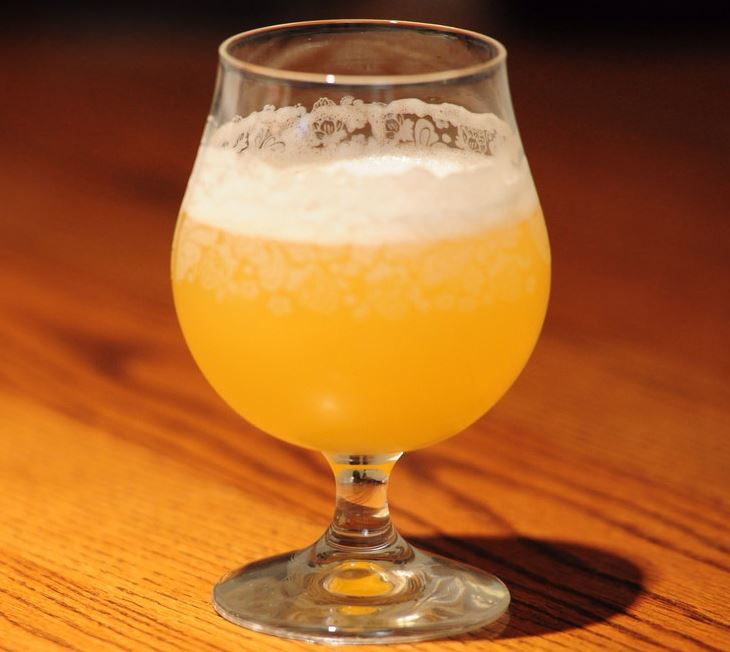How do you become a brewing legend? The easiest way is to save a dying style. So here’s a pop quiz. Which brewers can be so credited? (Passing grade is two.) One of the easiest, for those of us in the United States, is Fritz Maytag and Steam Beer. The other, Pierre Celis and Wit beer.
Originating in Belgium, Wit evolved as a product of geography and world conquest. Its roots go back to the area of Brabant just east of Brussels which extends toward the city of Liege. A part of the Netherlands in the early 1800’s, this was a wheat growing region and the Dutch word for wheat “Tarwe” is still seen on many of the Wit beer labels.
The Dutch connection is also significant for the other major characteristic of Wit. In that era the Dutch virtually controlled the spice trade. Thus, coriander along with curacao orange peel from the Netherland Antilles, and other spices found their way into the beer. The addition of spice wasn’t by chance; rather, it derived from the older method of brewing practiced before the widespread use of hops.
Once there were more than thirty brewers in Belgium making Wit beer but over time the style fell from favor and in 1954 the last of these breweries ceased operations. It was in 1966 that Pierre Celis, missing the old style, started producing a Wit beer from his De Kluis brewery. He called the beer Hoegaarden. Eventually it gained favor among a younger set of beer drinkers and by the 1980’s the style was once again popular; popular enough to be bought out by the large European concern Interbrew (Artois).
Delightfully refreshing, almost everything about Wit beer is a bit different and this difference starts right at the beginning of the brewing process. A grain bill for Wit is different from others of the wheat beer family because it’s comprised of 45 – 50% unmalted wheat. This does two things for the beer, it provides a very white, dense, rocky head and a cloudy, hazy beer. The haze is a direct result of the high protein content in wheat. Proteins are long molecules, long enough to refract light as it passes through the beer. Not surprisingly the Belgians proudly flaunt this cloudiness and leave the finished beer unfiltered. Some versions also use a small amount of oats, amounting to about 5 percent, to add a touch of silky mouth feel.
Like other beers of this country, Wits use aged hops so there are very low levels of hops in both taste and aroma. What is noticeable are the spices. These are not jump up and grab you spices; they are a harmony of sophisticated sublimity. You should be able to identify clearly the orange and coriander which are commonly used, along with other spices favored by individual brewers. Although certainly discernable they should be, in the finer versions, well balanced. You may also detect notes of honey and apple as by-products of the wheat and perhaps a trace of the horse blanket quality described as “house character” in many Belgian beers. What these do not exhibit is any of the banana or clove notes of their German cousins.
Bottled within four to five days of primary fermentation, Wit beers were intended to be consumed within two weeks of conditioning. This might be the source of observations by old timers that many Wits had a lactic character like its cousin Berliner Weise. In fact, this trait diminishes as the beer ages and results in a Wit more like the soft, slightly sweet profile we expect in today’s versions.
A few years after selling off his Belgian brewery Pierre Celis had the need to brew again. Thankfully he demanded a location with water which replicated Belgium’s, and he found that match in Austin, Texas. Grateful fans of Wit beer have embraced this American version as much as the people of Belgium popularized his original. In fact the beer-loving citizens of his native country have bestowed him a bit of an honor. You can find Pierre’s American version, Celis Wit, in bars all over Belgium. After all, he saved a dying style.
The soft, delicate nature of Wit beers with their subtle spices and hints of honey make most people associate them with the summer. However, when warm weather ends don’t set them aside; these beers can be invited to your table in any number of roles. Serve them as an aperitif or use them in the place of sorbet as a palate cleanser. Perhaps their best application is at dessert where they work well complementing fruit or any number of light desserts.
Blanc de Bruges from the Gooden Boom Brewery, a very light bodied version of the style with a hint of honey and sweetness underlying a mild bite of yeast. The spices are balanced but so subtle you’ll have to search for them. Great summer version of the beer.
Dentergem by the Riva Brewery, is a bit more sweet and full in body than the Blanc de Bruges but still not quite as complex as other versions. The finish is sweet with a noticeable honey character. Fits nicely as a little sweet for after dinner.
Hoegaarden from Artois presents one of the more full, silky, almost oily mouth feels of the Wit beers. Spices are a bit subdued but it stands up well enough to match with many main courses.
Steendonk’s Witbier by Palm, is one of the more dry examples of this type. For as much as the others exhibit honey-sweetness this is herbal and emphasizes the notes of orange. Try this as an aperitif.
Celis White from Celis Brewing, its hard to argue with the master and although it’s a little bit lighter than Pierre’s early Belgian formulation it’s made its own mark. The spices mingle tease and fade in a complex ballet then finish somewhat dry. Recommended almost anytime.
Reprinted courtesy of Gregg Smith

